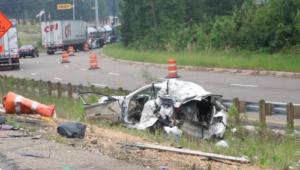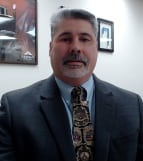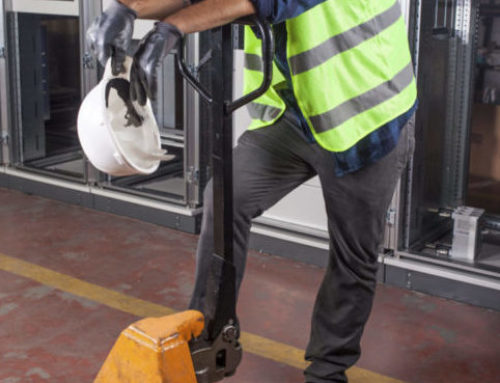 Nuclear Verdicts–What is it and how can I avoid it?
Nuclear Verdicts–What is it and how can I avoid it?
A “nuclear verdict” is commonly defined as a jury award of $10 million or greater and key distinguishing factors include disproportionate awards to plaintiff’s actual economic damages, the award majority is in punitive damages and is significantly higher than expected given the injuries.
Nuclear verdicts are changing the face and complexion of the trucking industry…average industry profit margin is 5% and insurance as a cost line item averages 3-4%. My research shows that only about 5% of cases go to trial and only 5-10 of about 5000 go nuclear. In other words the vast majority do not, however a handful of nuclear verdicts is enough to drive double digit annual insurance inflation for the entire trucking industry.
If a plaintiff attorney can prove any of the so-called “Dirty Five”–nuclear verdicts potential grows significantly. Here they are in no particular order:
- Fatigue
- Distracted Driving
- Driving under the influence
- Poor equipment maintenance
- Inexperienced/improperly trained driver
The Ugly Roots of Fatigue
Fatigue is often the root cause of many safety and health issues that can affect an organization. This includes the individual, his/her family, the company and the public at large. As encompassing as the affect is, the topic and how to address it is often hidden and unexplored. For years, I have seen the industry trying to address the symptoms rather than the root cause.
Obstructive Sleep Apnea (OSA) is not a benign condition. Potential short-term problems associated with untreated it are:
The neurocognitive and performance deficits seen in patients with OSA are due to daytime sleepiness and fatigue, which may impair concentration. As a result, patients with undiagnosed or untreated OSA have a high prevalence of automobile accidents and increased use of healthcare resources.
- Fatigue-induced motor vehicle crashes are up to 7x more likely with untreated OSA
- Drivers with severe sleep apnea were 4.6x more likely to be involved in a severe crash
- Drivers with untreated sleep apnea have the same risk as drunk drivers with a .08 blood alcohol content
Potential long-term problems associated with untreated OSA:
It has been estimated that 38,000 cardiovascular deaths occur each year in people with untreated sleep apnea and heart disease, representing the number one cost to the health care system.
In a more recent study, Young, et al. (AJRCCM 2002) reviewed recent research and concluded that:
- There is a high prevalence and wide spectrum of undiagnosed sleep apnea in the general population.
- Undiagnosed sleep apnea is associated with an increase in hypertension.
- Even mild sleep apnea is associated with significant potential health consequences
The pressure to address fatigue is high — from Hours of Service, high profile crashes, the NTSB’s 10 Most Wanted List, loss in productivity, increase in injuries, CME requirements instituted in 2014, to rising medical costs and in-cab cameras capturing a high frequency of fatigue events.
With data coming from seemingly everywhere, it is easy to find either corroborating or exculpatory evidence for the cause of an accident. By promoting proper sleep hygiene and implementing fatigue management programs, you help cultivate a company culture that drives better health, safety and retention outcomes.
Some of the nuclear verdicts over that last decade or so:
- Bouch Verdict—Truck driver in fatal Portage County crash sentenced to five years in prison and $41 million
- Associated Wholesale Grocers Verdict—$62.7 million settlement covers 8 of the 10 people killed in the accident
- Schnitzer Steel Verdict—Historic $280.65 million verdict delivered in wrongful death suit Madere v Schnitzer
Building your Safety Culture
- Study the NAFMP website
- Discuss the need for an FMP with your leadership
- Gain leadership “buy in”
- Write out your plan & bring in partners
- Educate Management, Safety, HR, CME and Drivers
- Review Policies & Procedures to eliminate discrepancies
- Create Compliance, Hiring & Operational Policies
- Constantly improve your FMP and document outcomes
Safety is not a stated priority, it must be a demonstrated value.
Adrian Knight, RRT
Chief Operating Officer
Adrian Knight, a Respiratory Therapist, has 30 years of experience in the HME/DME and Sleep industries. He has owned both a sleep lab and a HME/DME company and has extensive experience caring for patients suffering from a number of respiratory conditions. Prior to SleepSafe Drivers, Adrian was VP of Sales and Clinical for North and South America for SeQual Technologies Inc., a worldwide manufacturer of oxygen equipment. He has several patents and internationally published papers in the Respiratory and Sleep field.



